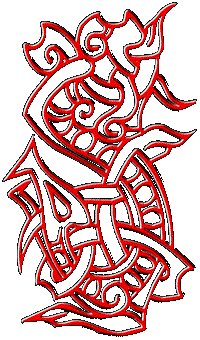 | ||
 | ||
The rules of very early games have not survived in any definite for but one old game called “Mia” is an entertaining game that does not have to involve gambling. You will need a flat bottomed pot with a lid that can be easily lifted and two dice. These can either be regular six sided cubic dice or rectangular dice about 50 - 100% longer than the width and with the 1 and 2 spots on the small ends (Dice like these have been found in a number of early sites). Each player has a number of lives, I suggest 3 to start with and the object is to be the last player surviving. any number more than one can play and the container is passed from one player to the next with the dice inside (being careful not to upset them of course). To play the game the first player shakes the dice in the pot and checks the result. That player then has three choices. A. They can tell the truth and say what they have rolled to the next person. B. They can lie and say they have rolled something higher. or C. They can lie and say they have rolled something lower. The next player now takes the pot and they now have three options. 1. They can believe the previous player and try to roll something higher themselves without looking at what the previous player had rolled. 2. They can call the previous player a liar and look at what they rolled. If this happens and the previous player has said they rolled higher than the dice in the pot the previous player loses 1 life. However, if the previous player has rolled the same or more than the score they said the current player loses a life. 3. The current player may believe the previous player and pass the pot to the next player without looking at the contents. If this happens the current player accepts the stated call and the actual dice roll as their own. If the next player disbelieves the call it is the current player that may lose a life. So far I have just said higher or lower for the scores but there is an order of score values which some find complex. The score is made up not by the total of the dice but by their values. For example 1f you roll a 6 and a 5, it is not 11, it is called 65 (note: the high die is always the first digit and the low die always the second). Now we come to the order of scoring. The highest roll is called “Mia” and is 21, no other score can beat this. Next in value are the doubles 11, 22, 33, 44, 55 and 66 in that order, it may seem strange that 11 is worth more than 66 but just think about those rectangular dice with ones and twos on the ends and it makes more sense. Now things turn the other way around, 65 beats 64 which beats 63 and so on down to 32 which is the lowest score. Thus the complete order is : 21, 11, 22, 33, 44, 55, 66, 65, 64, 63, 62, 61, 54, 53, 52, 51, 43, 42, 41, 32 Each time a player loses a life the pot returns to the preceding player and they roll again with the same choices A. B. and C. to start a new round. Each player must declare a score higher than the preceding players or pass the pot to avoid losing a life. If the pot is passed right round to the person who originally called the score they cannot pass it on without raising the score. If “Mia” has been rolled, called or falsely called the person in line to lose a life loses two lives.
The game is simpler to play than explain so I will use an example with three players. Olaf, Snorri and Erik.
Erik rolls first, he rolls a 4 and a 5, Erik looks and then hands the pot to Snorri saying “54”. Snorri takes the pot and feels he can do better, so without looking at what Erik rolled, he shakes the pot and looks inside. He has only rolled a 4 and a 1. Hiding the look of disappointment on his face he replaces the lid, says to Olaf “61” and hands him the pot. Olaf believes Snorri but is unsure whether he can roll better so he passes the pot without shaking it on to Erik saying “61”, because he is passing it on he does not have to raise the call. Erik has spotted the smirk on Snorri’s face as Olaf passes the pot so he suspects something is wrong. He calls Olaf a liar and opens the pot. The dice say 41 so Olaf loses a life. The pot returns to Olaf and he shakes the dice. This time he rolls double 4. Closing the lid and passing the pot Olaf looks Erik in the eye and says “44”. Erik does not know what is in the pot but 44 is a difficult score to beat and perhaps Olaf is trying to get one back on him. He calls Olaf a liar again. The dice say 44 so this time Erik loses a life. Olaf rolls again, the dice say 53, Olaf says “63” and passes it to Erik. Erik is taking no more chances so he shakes the pot. Unfortunately the dice land on 42. Erik says “65” and passes it to Snorri. Snorri, confident as ever thinks he can beat that and shakes the pot, much to Erik’s relief. He rolls double 2 and calls it. Olaf passes it straight to Erik saying “Double 2”. Erik passes it to Snorri saying “Double 2” Snorri must now beat his own score which is very high. He shakes and amazingly the dice show 21. He says “Double 1” and passes it to Olaf. If the pot comes back to him this time he will be able to raise the bid without shaking the dice, that should fool them. Olaf looks at Snorri and decides however unbelievable it is, Snorri looks too confident. He passes it on to Erik. Erik is sure this must be a lie and if he passes it on he will be caught by Snorri who knows what is in the pot, so he calls Olaf a liar. When he open the pot he finds 21... “Mia”. the dice were not lower than called so he loses and because it is Mia he loses not one but two lives. He is out! The pot returns to Olaf and he starts another round by rolling 64. He calls “64” and the game continues with Snorri until one of them loses all their lives.
This is a game I have played in longhalls and around campfires with many different people. Every game is different according to the company but one thing is universal. When you are playing this game, Trust no-one. Have fun, It seems complicated but once you have it sussed it’s one of the best games I know. |
 |
| [Living History] [Resources] [Services] [Whats New] [Contact Me] [Links] [Guestbook] [<©>] |
 | ||||||||||||
 | ||||||||||||
